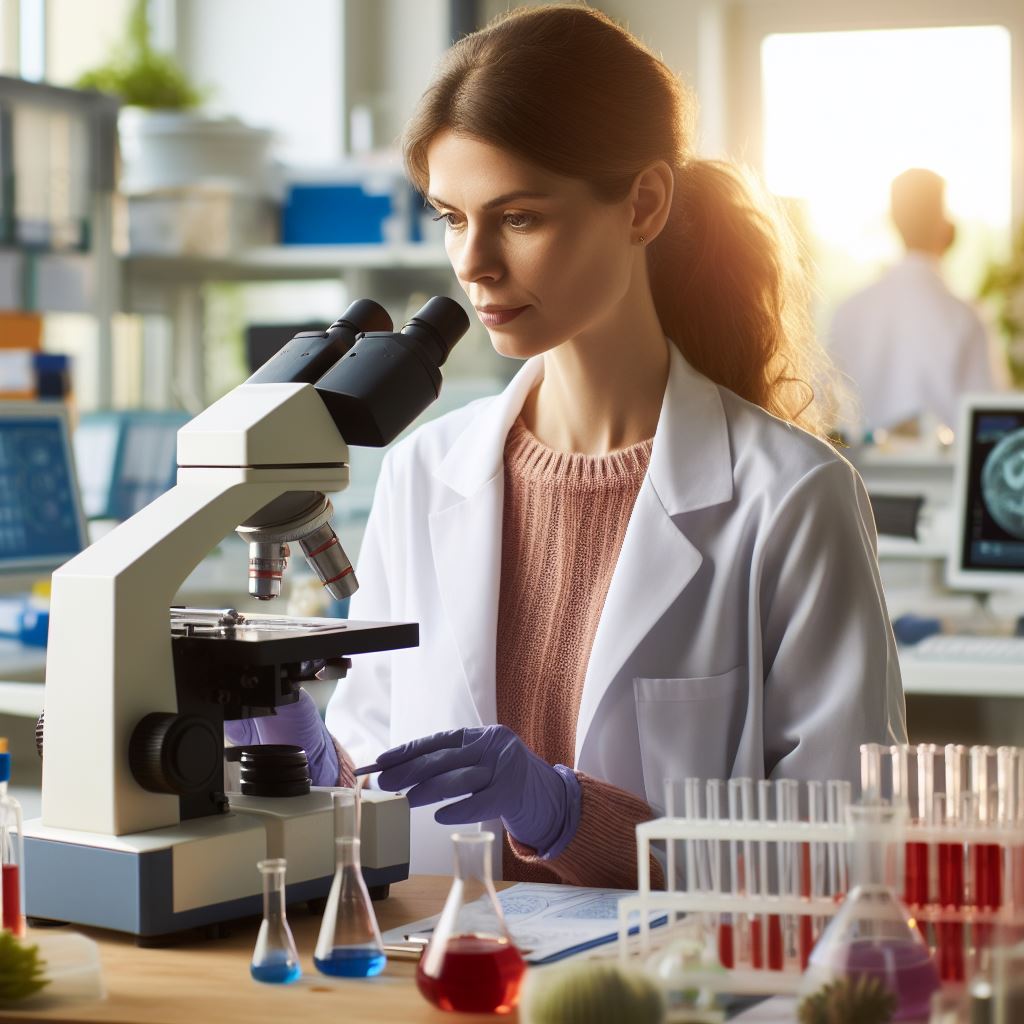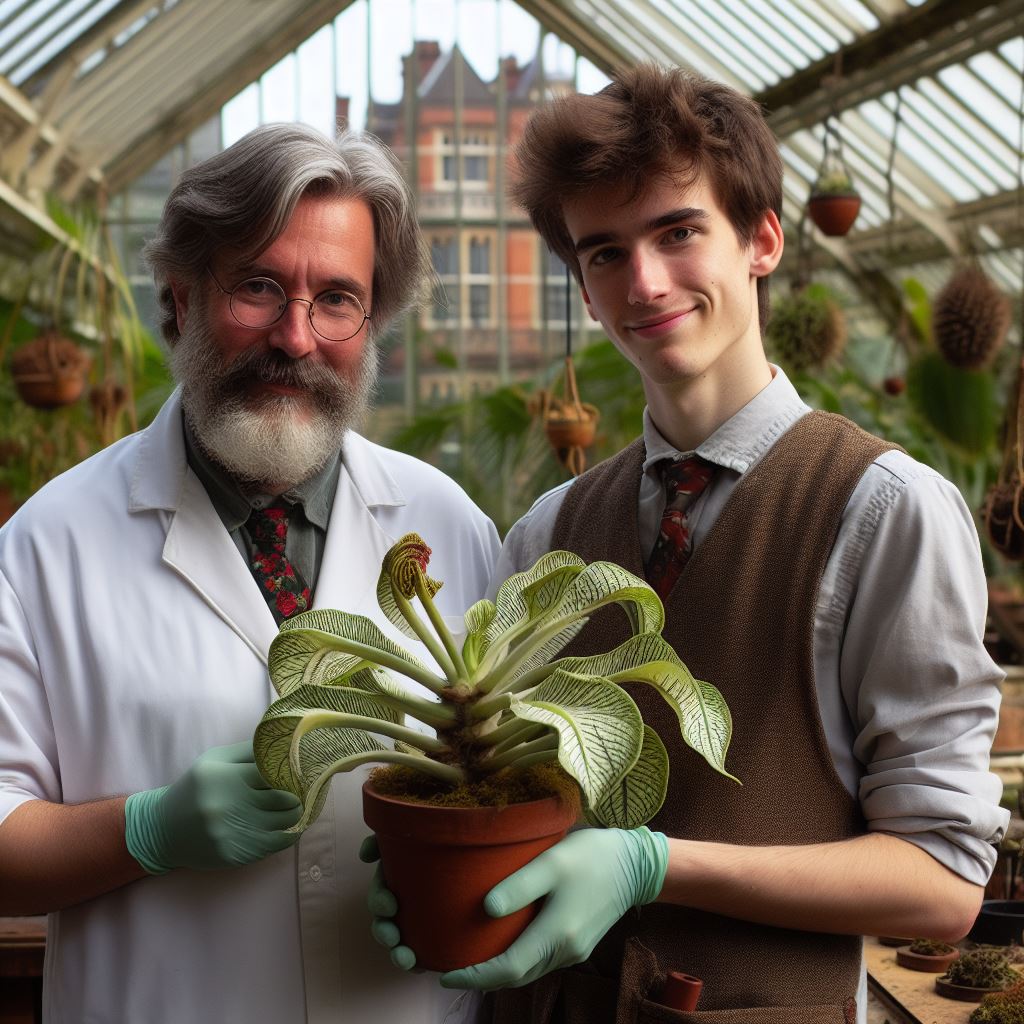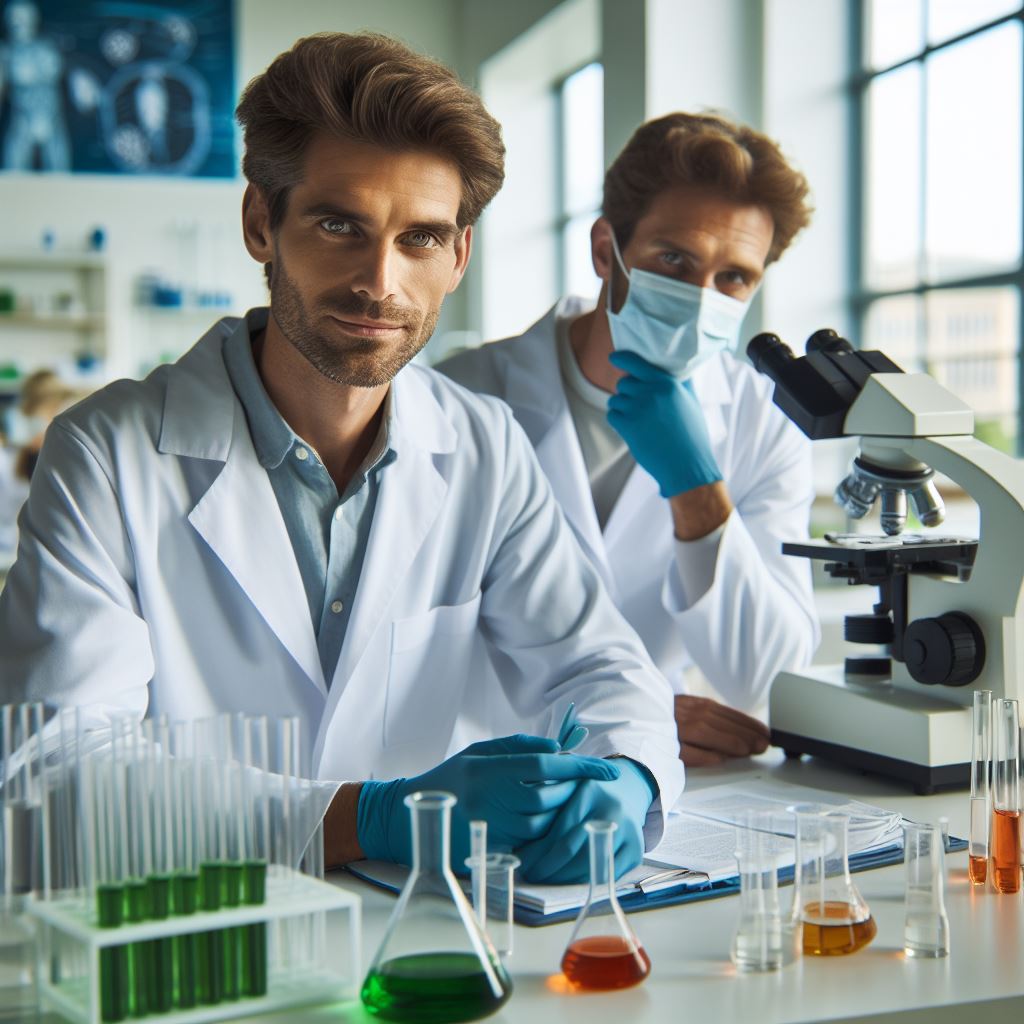Introduction
Overview of the field of biology
The field of biology encompasses the study of living organisms and their interactions in the natural world. Technology plays a crucial role in advancing research and understanding in this field.
The importance of technology in the field
Technology revolutionizes how biologists explore biological processes.
Advanced tools, like DNA sequencing, decode genetic information, unveiling insights into diseases and evolution.
High-resolution microscopes visualize cellular structures, uncovering microscopic life intricacies.
Computational biology and bioinformatics use algorithms to analyze vast biological data, predicting protein structures and identifying drug targets.
Drones enhance fieldwork, mapping landscapes and monitoring animal behavior.
Remote sensing tracks habitat changes, monitoring biodiversity on a larger scale.
Big data and artificial intelligence integrate, processing massive datasets for breakthrough discoveries.
Machine learning algorithms analyze patterns, uncovering hidden relationships within biological data.
Technology is indispensable, from unraveling genetic codes to studying ecosystems, revolutionizing biology and delving deeper into life’s mysteries.
Read: UK Biologists and COVID-19 Research
Biological Research Tools
Microscopes
- Different types of microscopes used in biological research include light microscopes, electron microscopes, and confocal microscopes.
- Microscopes aid in studying cells, tissues, and microorganisms by providing magnified images and enabling detailed observation and analysis.
Microscopes have revolutionized biological research by enabling scientists to visualize and study structures that are otherwise invisible to the naked eye.
Light microscopes, also known as optical microscopes, are commonly used in biological laboratories.
They use visible light to generate images of various magnifications, allowing researchers to observe cells, tissues, and microorganisms in detail.
Electron microscopes, on the other hand, use a beam of electrons instead of light to achieve even higher magnifications and resolution.
This technology has provided unparalleled insights into the ultrastructure of cells and the fine details of biological molecules.
In addition to optical and electron microscopes, confocal microscopes are widely used in biological research.
These instruments use laser scanning to generate high-resolution, three-dimensional images of biological specimens.
Confocal microscopy allows researchers to study live cells and observe subcellular structures with exceptional clarity.
They are commonly used in fields such as developmental biology, neuroscience, and immunology.
Centrifuges
- Centrifuges are used to separate different components in biological samples based on their density.
- This separation is achieved by spinning samples at high speeds, causing the denser components to settle at the bottom.
- Centrifugation finds applications in biological research for isolating proteins, DNA, and other molecules from complex mixtures.
Centrifuges are vital tools in biological research laboratories. They are used to separate components of a biological sample based on their density.
By spinning the sample at high speeds, the denser components settle at the bottom, while the lighter components remain in the supernatant.
This allows researchers to isolate specific components such as proteins, DNA, or organelles from complex mixtures.
Centrifugation techniques find applications in various areas, including cell biology, biochemistry, and molecular biology.
Spectrophotometers
- Spectrophotometers measure the intensity of light absorbed by substances to determine their concentration or analyze their properties.
- These instruments utilize the principle of spectroscopy to analyze the interaction of substances with specific wavelengths of light.
- Spectrophotometry is widely used in biological research for DNA analysis, protein quantification, and studying enzyme kinetics.
Spectrophotometers play a crucial role in quantifying and analyzing substances in biological research.
These instruments measure the intensity of light absorbed by a substance at specific wavelengths.
By comparing the absorption spectrum of a sample with known standards, researchers can determine the concentration of the substance or analyze its properties.
Spectrophotometry is commonly used in DNA analysis, protein quantification, and enzyme kinetics studies.
It allows researchers to assess the purity and concentration of nucleic acids, quantitate biomolecules, and study the behavior of enzymes.
PCR machines
- Polymerase chain reaction (PCR) technology is used to amplify DNA sequences, allowing researchers to generate millions of copies of a specific DNA fragment.
- PCR machines provide the necessary temperature cycling required for the denaturation, annealing, and extension steps of the PCR process.
- PCR machines are indispensable in genetics and molecular biology studies, enabling DNA sequencing, genetic profiling, and gene expression analysis.
PCR machines have revolutionized genetics and molecular biology studies.
Polymerase chain reaction (PCR) technology allows researchers to amplify specific DNA sequences, generating millions of copies in a short period.
PCR machines provide the precise temperature control required for the denaturation, annealing, and extension steps of the PCR process.
This technology enables various applications, including DNA sequencing, genotyping, cloning, and gene expression analysis.
PCR machines have become essential tools for studying genetic diseases, identifying pathogens, and analyzing gene function.
In summary, biologists rely on a range of specialized tools in their research.
Microscopes, centrifuges, spectrophotometers, and PCR machines provide the necessary capabilities to study biological samples at different levels of resolution and quantification.
These tools are instrumental in unraveling the complexities of cells, tissues, and biomolecules, enabling breakthrough discoveries in the field of biology.
Read: Grants and Funding for UK Biologists

Laboratory Equipment
Autoclaves
- Autoclaves are vital tools in the laboratory used for sterilizing equipment.
- Their role is to eliminate any microorganisms or contaminants present on the laboratory equipment.
- By subjecting the equipment to high-pressure steam and heat, autoclaves ensure complete sterilization.
- Autoclaves are crucial in preventing cross-contamination and maintaining the integrity of biological research.
In the field of biology, laboratory equipment plays a critical role in conducting accurate and reliable research,
This blog section discusses several essential tools used by biologists in the United Kingdom, their functions, and their significance in biological research.
Autoclaves are an integral part of laboratory equipment. They are used to sterilize equipment and eliminate any microorganisms or contaminants present on the surfaces.
By subjecting the equipment to high-pressure steam and heat, autoclaves ensure complete sterilization, preventing cross-contamination and maintaining the integrity of biological research.
Incubators
- Incubators provide a controlled environment for the optimal growth of cells and microorganisms in the laboratory.
- They maintain precise temperature, humidity, and atmospheric conditions necessary for successful cultivation.
- Various types of incubators are used for different purposes, such as CO2 incubators for cell culture and bacteriological incubators for bacterial growth.
- Incubators are vital tools that support the growth and maintenance of living organisms in biological research.
Incubators are another essential tool in the laboratory. They provide a controlled environment for the optimal growth of cells and microorganisms.
Incubators maintain precise temperature, humidity, and atmospheric conditions necessary for successful cultivation.
In biological research, scientists use various incubators to grow and maintain living organisms, serving different purposes.
Flow Cytometers
- Advanced instruments, flow cytometers analyze and sort cells based on their physical and chemical properties in biological research.
- These instruments employ laser beams to examine cells and provide valuable data on their size, shape, and fluorescence intensity.
- Flow cytometry plays a crucial role in immunology and cancer research, enabling the identification and characterization of immune cells and cancer cells.
- Flow cytometers offer high sensitivity and accuracy, making them indispensable tools in the field of biology.
Flow cytometers are advanced instruments that analyze and sort cells based on their physical and chemical properties.
These instruments employ laser beams to examine cells and provide valuable data on their size, shape, and fluorescence intensity.
Flow cytometry is particularly important in immunology and cancer research, as it enables the identification and characterization of immune cells and cancer cells.
Gel Electrophoresis Equipment
- Gel electrophoresis is a technique used to separate DNA, RNA, and proteins based on their size and charge.
- This equipment utilizes an electric field to drive charged molecules through a gel matrix, allowing their separation.
- There are various types of gel electrophoresis equipment available, such as agarose gel and polyacrylamide gel electrophoresis systems.
- Gel electrophoresis is a fundamental tool in molecular biology, enabling the analysis and characterization of biomolecules.
Gel electrophoresis equipment is vital for separating DNA, RNA, and proteins based on their size and charge.
This technique utilizes an electric field to drive charged molecules through a gel matrix, allowing their separation.
In molecular biology, scientists widely use gel electrophoresis to analyze and characterize biomolecules, employing various equipment like agarose and polyacrylamide gel systems.
In general, laboratory equipment plays a crucial role in the field of biology.
Autoclaves ensure the sterilization of equipment, preventing contamination.
Incubators provide optimal growth conditions for cells and microorganisms.
Flow cytometers enable the analysis and sorting of cells based on their properties.
Gel electrophoresis equipment allows the separation and analysis of biomolecules.
These tools collectively contribute to the advancement of biological research, ensuring accurate and reliable results.
Read: Biologist: Freelance vs Institution Roles
Data Analysis and Software
Bioinformatics tools
Bioinformatics is a field that plays a crucial role in analyzing biological data. It combines biology, computer science, and statistics to interpret biological information.
Personalized UK Career Consulting
Receive tailored career guidance designed just for you. Get actionable steps and expert support to boost your career in 1-3 days. Take control of your career now.
Get StartedBiologists in the UK utilize several popular bioinformatics tools to process and analyze large volumes of biological data efficiently.
These tools help them make sense of complex biological systems.
Some widely used bioinformatics tools in the UK include BLAST, which identifies similarities between biological sequences, and CLUSTALW, which aligns multiple DNA or protein sequences.
Another renowned tool is GenBank, which stores and provides access to DNA sequences of various organisms. Biologists can use this database to retrieve valuable genetic information.
Statistical analysis software
Statistical analysis is vital in biological research as it enables researchers to draw meaningful conclusions from experimental data.
In the field of biology, statisticians often rely on software such as R, SAS, and SPSS to perform statistical analyses. These programs offer a wide range of statistical techniques and tools to explore and interpret biological data accurately.
R, an open-source language and software environment, is particularly popular among biologists due to its extensive statistical capabilities and wide user community.
Biological researchers widely use SAS and SPSS for their robust statistical analysis features and user-friendly interfaces in commercial software packages.
Genomic sequencing software
Researchers employ genomic sequencing as a powerful technique to determine the order of DNA nucleotides in a genome.
It has revolutionized the study of genes and genomes, providing insights into the structure, function, and evolution of various organisms.
Biologists utilize a variety of software for genomic sequencing and analysis.
One prominent software is the Genome Analysis Toolkit (GATK), which allows for variant discovery and genotyping.
Another widely used tool is the Burrows-Wheeler Aligner (BWA), which accurately aligns short DNA sequences to a reference genome.
Other popular software includes SAMtools for manipulating sequence alignment data and FASTQC for quality control of sequencing data.
In essence, data analysis plays a vital role in the field of biology, and various software tools are essential for effective data processing and interpretation.
Bioinformatics tools help in analyzing biological data by combining biology, computer science, and statistics.
Your Dream Job Starts with a Perfect CV
Get a tailored CV and cover letter that captures your unique strengths and stands out in your industry. Let us help you make an unforgettable first impression.
Get StartedStatistical analysis software enables biologists to draw meaningful conclusions from experimental data.
Genomic sequencing software allows for the study of genes and genomes, contributing to our understanding of genetic information.
In the UK, biologists widely use tools like BLAST, R, and GATK to tackle the challenges of data analysis in their research.
These powerful tools facilitate advancements in biological research and drive new discoveries in the field.
Read: Ethical Dilemmas Faced by UK Biologists
See Related Content: Overcoming Challenges in UK Scientific Research
Conclusion
Biologists in the UK utilize a wide array of tools and equipment for their research. These include microscopes, DNA sequencers, centrifuges, and lab automation systems.
Technology plays a crucial role in advancing biological research by providing more accurate and efficient methods for data collection, analysis, and experimentation.
Looking towards the future, it is clear that technology will continue to revolutionize the field of biology in the UK.
We can expect further advancements in areas such as genomics, bioinformatics, and synthetic biology.
These advancements will not only enhance our understanding of living organisms and ecosystems but also open up new possibilities for medical breakthroughs, environmental conservation, and sustainable agriculture.
The tools and equipment used by biologists in the UK, along with the continuous development of technology, have greatly expanded our knowledge and capabilities in the field of biology.
With each technological innovation, we move closer to unraveling the mysteries of life and utilizing that knowledge for the betterment of society.
[E-Book for Sale]
500 Cutting-Edge Tech Startup Ideas for 2024 & 2025: Innovate, Create, Dominate
$19.99 • 500 Tech Startup Ideas • 62 pages
You will get inspired with 500 innovative tech startup ideas for 2024 and 2025, complete with concise descriptions to help you kickstart your entrepreneurial journey in AI, Blockchain, IoT, Fintech, and AR/VR.




